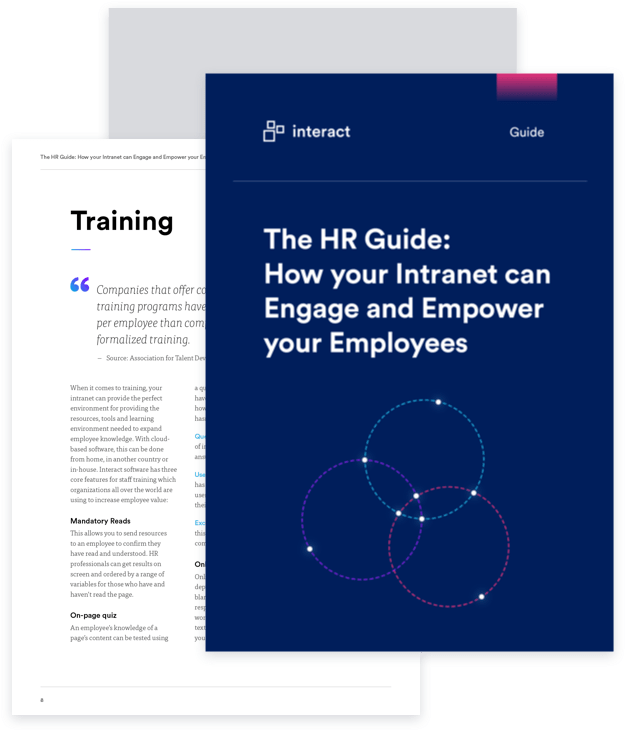Who’s a better fit? The candidate with excellent skills but seems a little too “different” for the office, or the person with weaker skills but a better “fit” culturally. HR managers face this debate at the start of every recruiting mission, yet how exactly are thy defining “cultural fit”?
There’s no question as to why making a proper assessment of culture fit is necessary.
According to the Society for Human Resource Management (SHRM), hiring an employee thatdoes not fit the company’s culture can cost the company 50-60% of that individual’s annual salary. Making the wrong decision can be costly but relying on your “gut feeling” can leave you dangerously close to some unintentional, unconscious bias.
When you make recruiting decisions that don’t take into account the culture fit of the candidate, you may find that:
- The candidate doesn’t fit in or feels isolated
- Satisfaction and productivity steadily decline
- Their values and behaviors are not representative of your organization
- The rate of employee turnover increases.
However, these negative consequences are no reason to become too selective. Diversity in people and opinions are critical for business success. More and more cases are arising of companies facing lawsuits over employee discrimination disguised as culture fit. This begs the question – Where does the borderline of culture fit end and the line of discrimination begin?
Empower and engage every employee
What is culture fit?
Building the best team for your organization is often harder than it seems. In the process, there will be plenty of times where two candidates with similar levels of strength will face off. What determines the winner? Termed as “culture fit,” the best candidate is more than their qualifications. Instead, a suitable candidate is someone who understands and relates to the company culture, its personality, its mission, as well as how it operates.
Assessing cultural fit throughout your recruitment process will help you distinguish which candidates will thrive in their new roles and ensure long term growth and success for them in your organization.

When you hire with culture fit in mind, you’ll find that your new recruits:
- Integrate faster into your team
- Bring higher contributions to your team
- Are happier and more engaged in their new roles
- Stay longer in their roles
It is critical to hire employees that congruent with your corporate culture is vital, but because culture fit is such an ambiguous variable to it can be challenging to measure or define.
Because of this, culture fit can easily be an exclusive term. However, exclusivity in itself implies a restriction on who gets accepted.
A problem can quickly arise – as much as culture fit is a reason to hire someone, it can also act as a reason to NOT hire someone. Favoritism then becomes a cloak for discrimination.
The many faces of discrimination
When assessing culture fit, it is essential to remember where diversity fits into the equation.
Hiring for culture fit ensures your future employees respect and embody your company values. What it doesn’t mean is dismissing a candidate based on belief, culture, lifestyle, or any other personal values you may not agree with.
Luckily, overt discrimination in the recruitment process is mainly illegal. Undercover or covert discrimination, however, is still very much alive and well. Discrimination can be present in every single step of the recruitment process and can manifest in several scenarios that limit the hiring of people based on:
- Race, color, gender, religion or national origin: Happily this was made illegal more than 50 years ago thanks to The Civil Rights Act of 1964.
- Age
: Usually geared toward people 40 years and older. This has been rendered illegal in The Age Discrimination in Employment Act of 1967. (which is why you can’t ask how old someone is in an interview). - Pregnancy or women with related medical conditions: In the spirit of fairness, an amendment to Title VII of the Civil Rights Act was passed to ensure that women are afforded the same rights as any other applicant.
- Disabilities: The Americans with Disabilities Act of 1990 prohibits discrimination against qualified individuals with disabilities. This provides equal opportunity to be hired and to be successful in their job function.
While cases of overt discrimination have decreased over the years, unconscious biases can still taint the recruitment process if no steps are taken to prevent it.
Empower and engage every employee
Avoid discrimination when assessing culture fit
Many recruiters rely on the idea of culture fit to bring In the best new talent. One in five (17%) employers say they wouldn’t hire a candidate if they were not the right cultural fit for them, according to a survey by totaljobs. However, in the wrong hands, culture fit can be a weapon meant to be used against anyone that is considered “unsuitable.” In these situations, it acts as a smokescreen, hiding prejudice behind undefined and nebulous criteria that the applicant cannot meet.
We don’t all have to have the same background, life experiences or abilities to focus on the values that guide our work.The following three tips can help make sure that you’re using culture fit to find the best possible candidates for your organization, no matter who they are:
Define your culture
The biggest misunderstandings surrounding culture fit occur because of its unclear nature. Often based on gut instinct or feeling, the true meaning of culture fit is hard to pinpoint. However, if you expect your candidates to live up to specific standards, you must first define them.
If you want to hire people that fit into your company’s culture, then you must find out what your current culture represents. It is essential to establish quantifiable indicators that can be used to measure the culture fit. By assessing key KPIs and learning how your organization determines success, you can hold potential recruits to a scalable criteria — therefore lowering the chances that your recruiters can make and unjustifiable or prejudiced rejection.

To obtain the fairest idea, do not rely solely on your HR. Turn to your employees, the individuals that work and engage with your organization daily. Collecting feedback from these employees via pulse surveys or forums will allow you to get a first-hand account of what values your new team should possess. The focus then moves to how well suited the candidate is to current workforce rather than how likable they are to the interviewer.
Recruitment panels
As much as we’d like to deny it, as humans, we are full of inherent biases. Based from our childhood or our experiences, these biases are there whether we recognize them or not. Problems are bound to arise when these viewpoints come to light during the hiring process.
The usual problem cases result from individuals hiring in their own images, choosing to reject candidates with traits that conflict with their vision. How best to override these partialities? By making your hiring staff as diverse as your candidates.
Choosing to do a recruitment panel or group method as opposed to leaving the decision making to one person can stop discrimination in its tracks. With a hiring team made up of people from various backgrounds, singular bias can be diluted as recruiters are forced to work together to create the perfect persona of cultural fit.
This method works even better when individuals from the hiring team are present. This allows for a more thorough description of the values and personality the candidate will need to have to fit into the team. The success of group process relies on the development of a diverse recruitment team. As the world grows, your workforce will be made up of different faces culture, and circumstances – your HR teamshould reflect this.
Empower and engage every employee
Personality tests
Sometimes leaving it up to human opinion and preference is the wrong way to go. While that human element in recruiting is imperative, it tends to inject too many of their personal views into the decision making process. Hiring someone you’d like to have a drink with is not culture fit. Hiring someone because they remind you of your younger self is also not culture fit.
Managers often worry that the personalities of new candidates will clash with them or with the current workforce. However, it is almost impossible to tell all the characteristics of an individual based on a resume or a one-time interview. Instead, the choice seems more like a guess, with far too much relying on your gut instinct – an instinct that may be naturally biased.

But there are real ways to determine cultural fit. Remove the possibility of discrimination by integrating tools into the recruitment process. Tools such as personality tests can help gauge personality traits and assess culture fit. These tests can act as a supplement to traditional methods like in-person interviews.
You can also consider software programs that support blind resumes or blind interviewing. Going in blind places a broader focus on the candidate’s ability and less on what they look like, further evading the risk of biased hiring decisions. Diversity analytics and a great diversity strategycan keep a close eye on what equality and inclusion looks like for your organization.
Conclusion
Being aware of culture fit is essential. But, it’s even more important not to use it as a weapon against diversity. Getting hung up on looks or gender or medical conditions not only leads to discrimination but can also rob you of a great candidate who might thrive in your organization.

The more flexible and open-minded you become, the higher the chance you come across precisely what your company might need. Those who shift their point of view to hire for an individual’s potential cultural contribution will successfully challenge their own potentially hidden biases.






